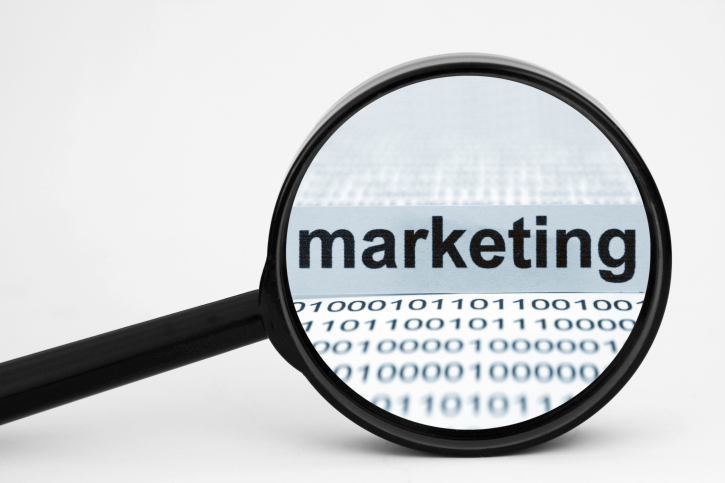Even if your team is back in the office, virtual meetings are here to stay, as many organizations won’t increase travel budgets this year. Instead, they’ll look for ways to connect in the cloud. To thrive in a hybrid workplace, small business owners need an affodable solution that’s easy to deploy.
Fortunately, Microsoft 365 and Teams provide user-friendly platforms to get work done. But it isn’t just the versatile software making a difference. Microsoft leverages the power of data to develop features designed to support worker wellbeing, improve collaboration, and increase engagement.
As business owners contemplate what the future of work will look like, whether that’s a fully remote or hybrid model, they also must consider the future of meetings. Adopting the right digital tools now allows small teams to consistently deliver on expectations.
| Learn how Cox Business can help your business prepare for the future of business and meetings with Cox Business Cloud Solutions, Microsoft 365 and Microsoft Teams. Learn More |
Designing Flexible Work Experiences
One thing is clear — how we work and meet has changed. According to Microsoft’s Work Trend Index, “Weekly team chats per person are up 45% and time spent in Microsoft Teams meetings has more than doubled globally and continues to rise.” To keep your business competitive and attract top talent, you’ll need to offer digital capabilities and workspaces that support employees from anywhere.
Making Meetings Effective
Microsoft says Teams usage climbed to 115 million daily active users in 2020, while Microsoft 365 users produced 30 billion collaboration minutes in one day. Although “60% of executives expect to raise spending on virtual collaboration tools and manager training,” leaders express concerns about altering the workplace.
Gartner reports, “30% of business leaders are most concerned with maintaining corporate culture,” 13% worry about “creating parity between the remote and in-office experience,” and 13% dwell on ways to provide seamless employee experiences.
Indeed, these concerns have merit. A YouGov and Otter.ai survey finds, “42% of respondents say they have experienced Zoom fatigue since the pandemic began.” So, what can be done to ensure productive meetings? According to the survey:
- Over half of respondents say all meetings need agendas
- 35% say employees “should only have to attend the relevant sections of meetings”
- 33% believe “that meetings should be shorter”
- 26% think “meeting notes should always be shared with attendees”
Creating Next-Generation Meeting Experiences
Meetings can be excellent for collaboration, but free solutions are a temporary fix, not a good long-term strategy. Switching to a tool like Microsoft 365 and Teams puts your workplace in the cloud. It allows everyone in your workforce to take advantage of the features that suit their individual needs and unique working circumstances.
Making Use of Innovative Features
Microsoft uses “artificial intelligence (AI) to understand the connection between employees, teams, and organizations.” The company continues to roll out new features and improve existing ones to ensure all users get an immersive experience. The following features are some of the latest offerings designed to improve meetings:
- Together mode: With AI segmentation technology, meeting participants can feel like they’re in the same room thanks to a shared background. Brain activity research by Microsoft shows Together mode reduces feelings of meeting fatigue.
- Dynamic view: AI enables personalized views to support your preferences and needs. Enhance meetings with new controls allowing you to minimize shared content or put certain participants side-by-side.
- Live reactions: Employees find meetings hard because of a lack of non-verbal cues. Emojis enable team members to express emotions and give instant feedback. This feature also works in PowerPoint Live Presentations.
- Chat bubbles: Microsoft recognized the problems associated with opening a second chat window during a meeting. New updates will keep conversations in front of staff so they can share ideas without skipping a beat.
- Speaker attribution: Currently, Teams provides live captions, but Microsoft is rolling out speaker attribution for captions to help all users understand who is speaking during a meeting.
- Live transcripts: Later this year, Microsoft will add live transcripts to make your meetings more inclusive, including placing a copy of the transcript in the meeting tab so employees can review the discussion on their own time.
- Whiteboard: This feature is about to become more interactive with sticky notes, faster load times, and drag and drop capabilities. These measures provide an inclusive experience for those without a Surface Hub or touchscreen.
Equipping Meeting Spaces
Reconfiguring office spaces is a priority this year. Microsoft’s Work Trend Index finds, “66% of business decision-makers are considering redesigning physical spaces to better accommodate hybrid work environments.” Simple technology upgrades combined with meeting software enhances experiences for in-person and remote participants.
Updates will allow Microsoft 365 and Teams users to host meetings with up to 1,000 participants. Everyone can talk, use video, and chat in real-time. Or share impressive webinars with a view-only mode for up to 20,000 attendees. Teams Rooms hardware works with Teams software for state-of-the-art experiences. Companies can purchase smart cameras and microphones, allowing remote viewers to see speakers, even as they move around the room.
Connecting With Clients
Customers expect seamless experiences, and Microsoft tools can deliver. You can create teams for project-based work, organization-wide groups, or client-facing programs. User access controls let you control visibility so that customers can participate in workflows without risking security. With Microsoft Teams and Channels, you can:
- Invite clients to online meetings
- Have virtual conversations via team chat
- Save files securely in the cloud
- Track projects and ensure accountability
- Keep records of all conversations and meetings
- Collaborate on Word, Excel, or PowerPoint files in real-time
Supporting Employee Wellbeing and Company Culture
There’s no shortage of data showing long stretches of meetings can fatigue employees mentally. However, flexible work schedules and an inclusive corporate culture combined with the right technologies can support employees. Together, they provide what people need to get jobs done without sacrificing their sanity. Microsoft delivers features intended to support worker wellbeing, including:
- Focus status: Set aside dedicated time using a calendar and the focus status.
- Silence notifications: Create quiet hours or days to stop alerts during non-work times.
- Reflect messaging: Assess worker wellbeing with custom check-in questions.
- Tasks app: Make organization easy with a unified view of assigned tasks.
Developing Business Resiliency With Microsoft 365 and Teams
Building resiliency into your business model is essential to navigating future disruptions. Moreover, selecting the right technology investments can ensure business continuity and help you scale your company. By reducing your reliance on less secure applications, you can create a foundation to actively improve your remote and hybrid workflows. Microsoft 365 and Teams:
- Provides an API to extend your capabilities and connect third-party applications
- Lets you manage files located in Google Drive, Dropbox, and Box
- Supports in-channel apps for tools like Salesforce or SurveyMonkey
- Offers bots to automate routine tasks and communications
Empower Your Workforce With Microsoft
As employees reconsider skill sets and ponder the possibilities of flexible work, small businesses can take immediate action to retain top talent. Additionally, companies can arm themselves with the tactics and tools to delight clients while meeting expectations at every turn. Migrating your workflows to Microsoft 365 and Teams now helps you address today’s issues and keep ahead of upcoming changes.
| Learn how Cox Business can help your business make the move to Microsoft 365 and Microsoft Teams. Learn More |
- How to Use Business Technology to Thrive in the Future of Hybrid Work - October 19, 2021
- The Breach Within – How to Address the Risk Employees Pose to Your Cybersecurity - September 9, 2021
- The Future of Remote Work and How Collaboration Is Evolving - August 30, 2021


